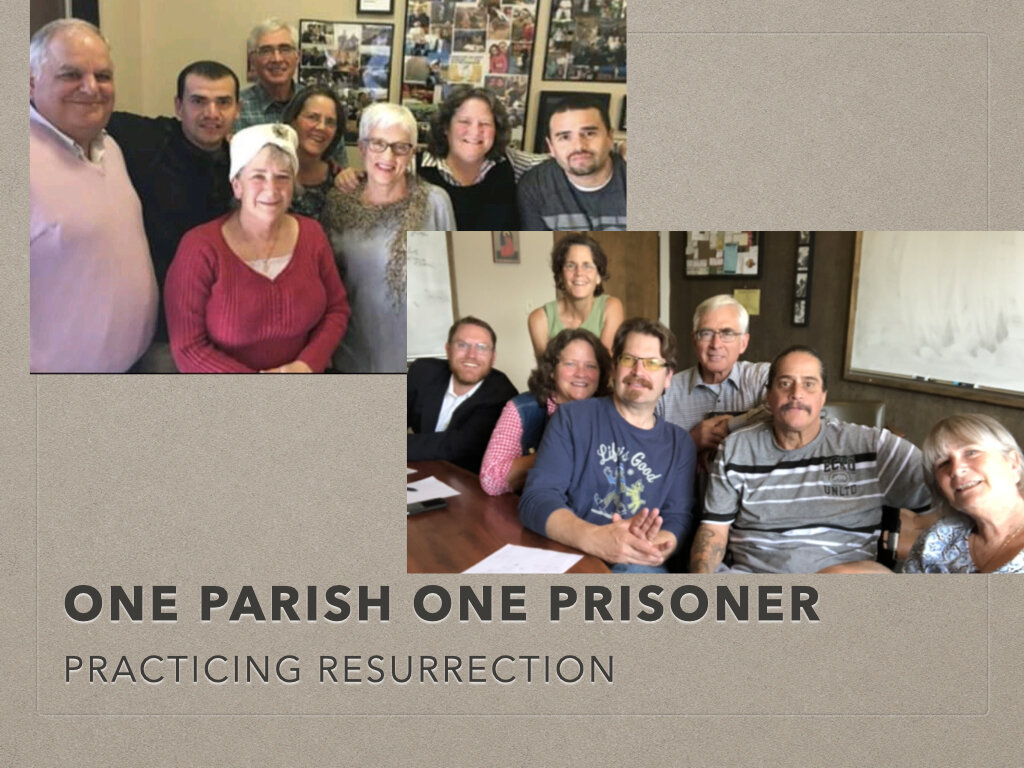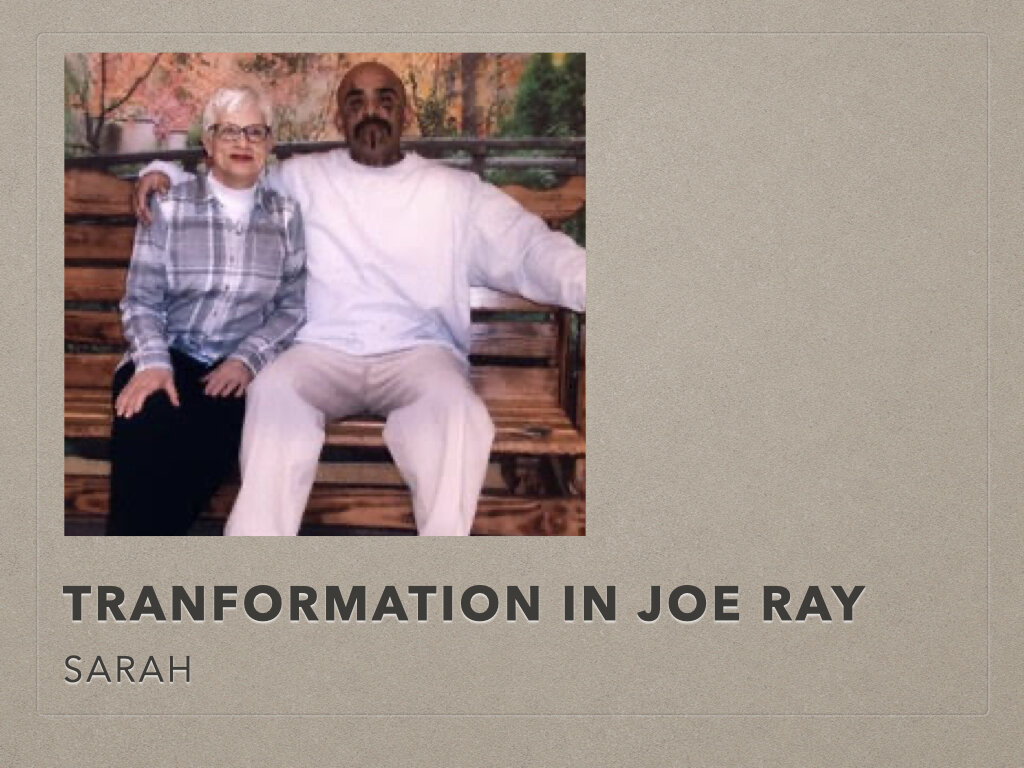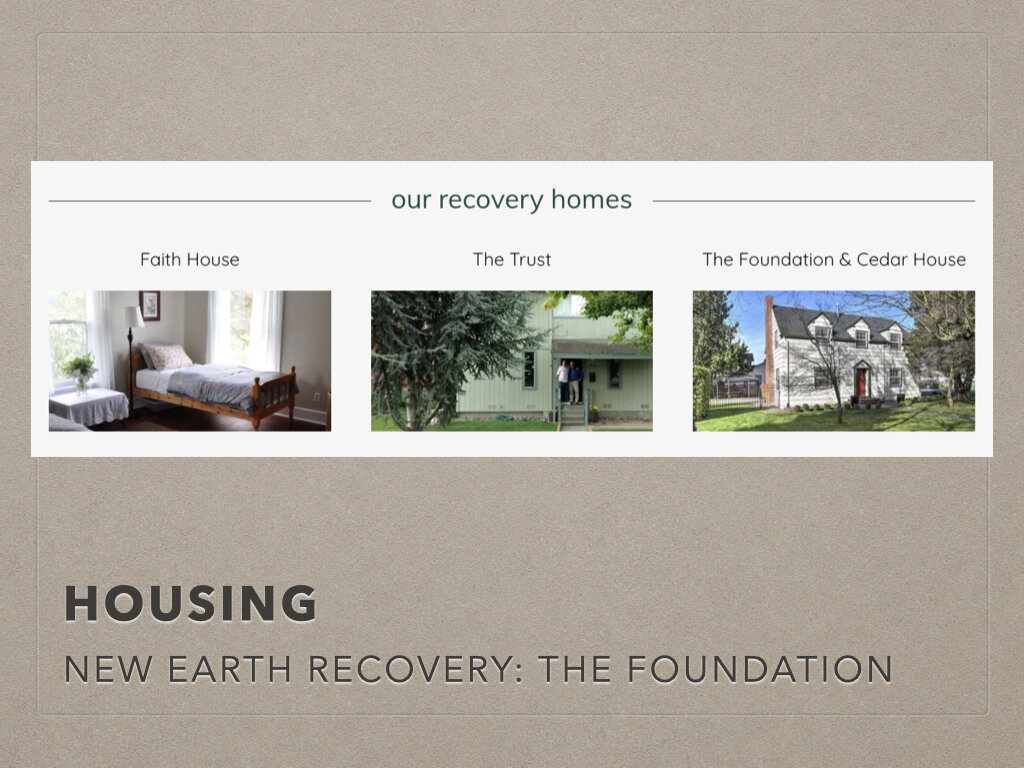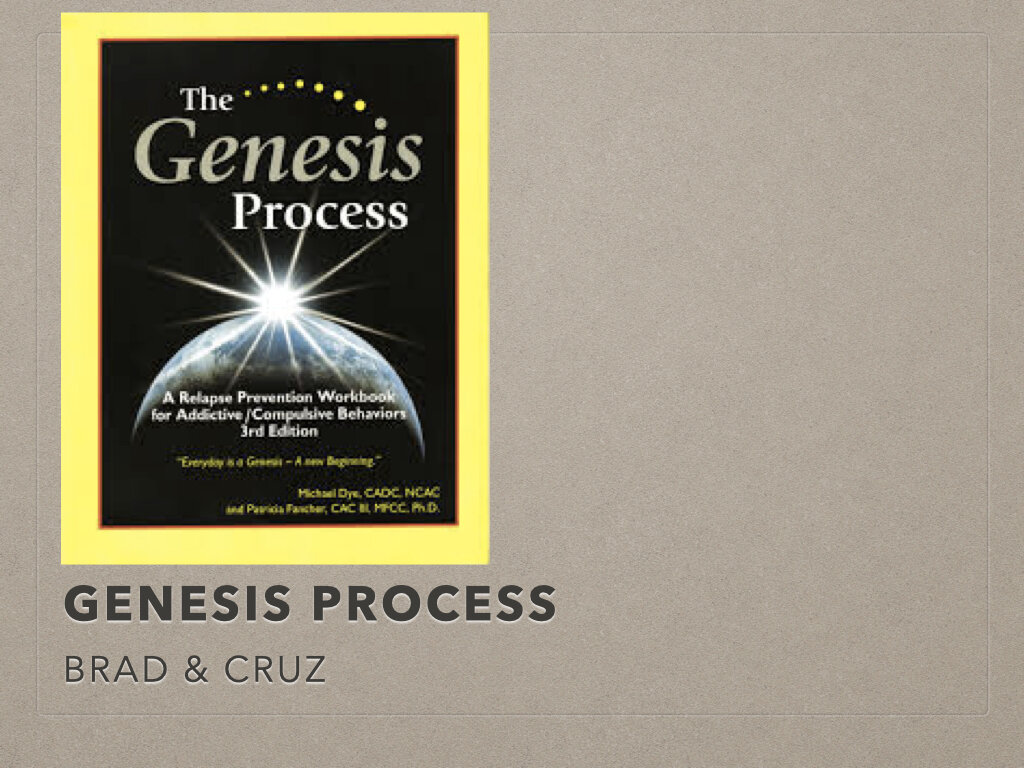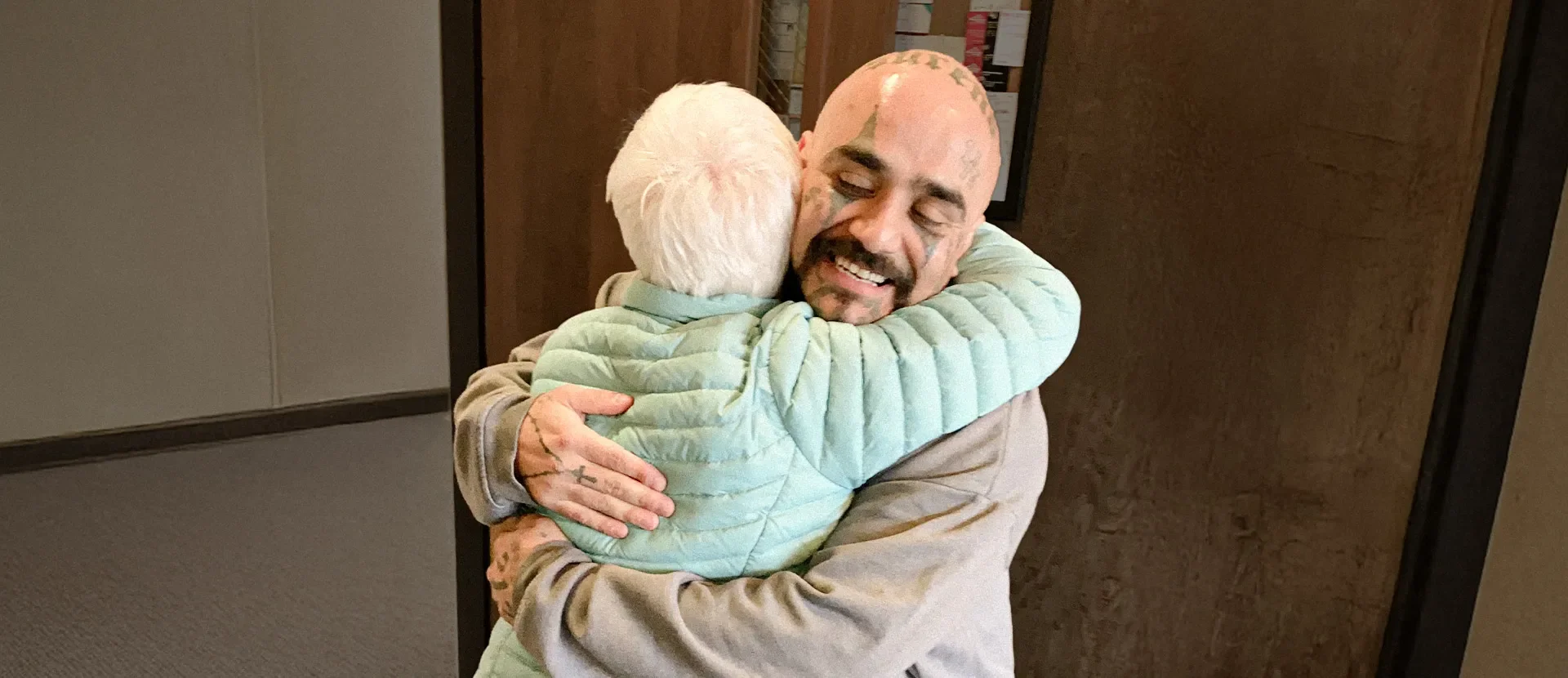
Storytelling and organizing with more of the congregation.
Here’s what some teams have done.
Jesus Raises Lazarus. Jesus MAFA, 1973, Cameroon. Vanderbilt Divinity School Library
THE TIME HAS COME
You’re getting so close to your friend releasing! Well done for making it this far as a team. We gave you a preview of this important event months ago in the “Money” module. Now it’s time to plan your Welcome Home Event with the rest of the congregation.
This is where the connection between the “hand” of your small team and the larger “body” of your congregation gets strengthened. Where the initial grip of friendship, like a handshake, is now pulled into a much larger and stronger embrace.
You have learned so much—about your incarcerated friend, about mass incarceration, about relationships across external and internal barriers, and about our faith.
Now is a joyful time to share some of this with your wider faith community:
introduce your friend (and Jesus’ friend) inside the tombs
share about the tomb system you’ve been navigating
invite them to help roll away the stone at this final push
prepare the larger body to fully welcome and embrace your resurrecting brother or sister into the community.
So here are the basic ingredients we suggest for a rich, one-hour “Welcome Home” event sponsored by you, the church’s One Parish One Prisoner team. Take this month to start planning this event: scheduling, divvying up tasks, getting creative.
Have fun!
BEFORE THE EVENT: A letter of introduction from prison
What better way to introduce this shadowy mystery person in prison to the larger church… than letting your incarcerated brother or sister introduce themselves, in their own words?
One church did this, and now it’s a One Parish One Prisoner best practice. This letter is the first piece to get started in preparing this month:
Invite your partner to introduce themselves in one page to the larger congregation. To name their past crime in their own words (just a sentence or two; this is not the deeper storytelling you’ve done earlier). When this is done well, in two or three sentences, it disarms so much wondering, whispering, or fear.
Then, invite them to share a bit of their journey of healing, coming alive, however they would describe their story’s turn. And what they want moving forward in life. What would they like to ask the congregation?
Insert a photo of themselves they’d like to share, photocopy this and put it into the church bulletin the Sunday before the event. Or mail this to homes in the church mailer if you have one. Or email it if your church is not meeting in person during the pandemic.
A shared prison letter directly from your beloved releasing friend is a key step in discipling your church.
This is not just hearing the voice of Lazarus while still in the tombs.
This is a chance to remind the church that prison letters are much of our New Testament. Much of our faith’s central scriptures were written by a formerly violent aggressor—whom the early Christians feared!
One church read their letter aloud, during their mass’ announcements: “And now, a reading from the Epistle of Saint Ruben…” This is more than a charity announcement. This can be both fun and enlightening for the congregation: refreshing our understanding and practice of our own roots as Christians.
WHEN TO HOST IT: It’s best to schedule at least a month before release.
Some churches have found it easier to host immediately following a Sunday service, in the fellowship area with extra refreshments. Some churches prefer an evening gathering. Pencil in an hour.
During the COVID-19 pandemic, one church is breaking up the following components of the hour-long event into a string of One Parish One Prisoner updates strung across six Sunday services. This is a great idea, as it builds a sense of anticipation—a kind of advent liturgy. (By the way, Advent is a rich season to talk about the practice of waiting for someone’s arrival home from prison. Prison reentry as advent training. It’ll preach.)
PREPARE SLIDES: For throughout the event.
Visuals are important. Make some slides. Be creative.
a photo of your friend with their name
any photos of their past they want to share, for history, and any that may have been taken with your team on prison visits
photos of your team together or, if during quarantine, take a screenshot of your Zoom screen of beautiful faces
any passages or images from the learning modules that might give theological framing: that we are practicing resurrection — tell the Lazarus story as the guiding image for this work.
There’s a slideshow from one of our early One Parish One Prisoner churches, available to download in different formats. Feel free to borrow language, follow its order, steal, or modify. Make it much better!
QUICK QUESTION
A SUGGESTED TEMPLATE TO BORROW:
1. MASS INCARCERATION 4-MIN VIDEO: National Impact
At the event, start with a brief welcome to the first-ever One Parish One Prisoner program’s “Welcome Home Event.” Explain again that your team has been building relationship with someone in prison, and learning about practicing resurrection as a church in the age of mass incarceration.
“And to start… we’d like to share a quick video that tries to summarize what we mean by mass incarceration in just four minutes!’“
Roll the video you watched a month ago:
2. WHAT IS ONE PARISH ONE PRISONER? : The Movement
After the video, it’s easier to frame what you’re doing: what if everyone releasing from prison had a hub of local people welcoming them and supporting their reentry in Jesus’ name?
Share the two core concepts:
Practicing Resurrection: this is the core of our faith as Christians, and we can practice it, like the Lazarus story
Mutual Transformation: it’s not about fixing this person, or saving them, but entering into real relationship, where God more fully transforms us.
3. WHO IS ___________? : Personal Impact
This is the question most congregants want to know, and you have the honor of starting to answer that beautiful question.
This is where you click to the slides of your person’s smiling face through the lousy pixels of a prison photo. Through these gates of Hades—and "through a glass, darkly," as Paul the Apostle wrote—we see our friend, our reflection, our partner in resurrection.
Read a portion from his or her letter, inviting folks to read the whole thing that was sent out last week, if they haven’t yet. Have one of your team members describe getting to know this person, and what you want the congregation to know—and love—about this returning community member.
Now’s a great time to invite one of their loved ones to also share: the girlfriend, mother, son, brother your team has gotten to know over recent months. What do they want this church full of community members to know about their locked up loved one coming home so soon? Sometimes this can be an emotional moment. Savor the resurrection and work of the church already happening in this moment.
4. TESTIMONY
Hopefully every team member can speak, around 3-4 minutes each.
One person can describe just the process of getting to know someone in prison. So the congregation can relate to the fears, hesitations—as well as learn about what it was like doing JPay with someone in prison, or driving to a distant facility and entering the lockdown world for a few hours.
Two members can share their personal testimonies, or journeys of transformation. Rather than talking about the incarcerated person’s change, this is about what’s changed inside YOU through this new relationship. What did you discover about yourself, or have to face in yourself? What challenges did you face, or what joy surprised you? How did your faith become more real as a follower of Jesus?
Feel free to revisit the Through the Gates of Hades module, where one team’s inspiring testimonies shared at their event may give you courage.
Another short testimony: one person can share an “aha” you might feel the congregation needs to know, something you never knew about your community—or the justice system—if you hadn’t been through this journey of relationship with the incarcerated. Think of one part of the learning modules that most applies to your friend’s journey: addiction recovery, immigration, domestic violence? What has your team learned about that issue? In the world, in your person, and among yourselves?
Where will he or she be living? What’s the release date? How can folks help? (That part is coming.)
5. “ROLL AWAY THE STONE” FUND: ~$2,500
This is the core of the fundraising ask.
You’ve shared about the many barriers to reentry that men and women often cannot surmount in their long exodus from prison—barriers that keep citizens underground today, and often keep them trapped in old networks, old ways of making money, running from new warrants, and imprisoned again.
Here’s our list of the most common financial barriers to reentry that men and women face immediately upon release from prison. You have a head start on these, and your church can help roll these stones away from your friend’s tomb.
Driver’s License
Knowledge Test ~$40
Driving Test ~$40
DOL (Re)Issuing Fee ~$180
Opening Payments in Court Debt Plans
Average two different courts, ~$25 each court, for 2-3 months to get them started (to take holds off their licenses)
= ~$150
Auto Insurance
Often folks with bad driving records are required by law to get the more-expensive SR-22 high-risk insurance. This can be ~$300 per quarter, to start off their legal driving until their eventual employment and income (and budgeting, with your help!) kicks in. Be patient.
First Month’s Rent
Hopefully your returning friend and you have found some kind of low-rent program, transitional house, recovery home, or other situation. Rent can be $500-600/mo. Save up for two months’ rent help as they work their early reentry so they don’t have to panic for a job that first month; their first full-time job is piecing their life together. $1,000-1,200
There’s Always Something
Dozens of barriers will appear. You can’t plan for them. Rather than scramble and try to make another ask a month or two months after release, add $500 to the total now, while people are together and giving. Embody God’s generosity. It brings peace when panic comes.
Total: ~$2,410
Yes, that feels a large amount if one person had to supply it. But that’s not a lot for a whole church to put together.
If you think your church might balk at this amount—roughly $2,500—invite them instead to wonder how newly-released individuals ever get their driver’s licenses and insurance, pay down legal debt in multiple courts, pay first month’s housing, buy clothing and hygiene, or get to work legally to begin earning minimum wage. That dollar amount is a quick glimpse at the size of the stone to roll away.
How many people go back to prison because of these costs? Not only can your congregation pool together this amount as you invite them in, but rallying to raise this amount is how we wake communities up to see how heavy the barriers are!
Remind the church that you aren’t handing the cash over, but your team will be accompanying your friend through this gauntlet of offices, armed with a community of Christ’s collection of financial support (a check, a church debit card to swipe) at those intimidating desks. Their shared giving will become a talisman of forgiveness—erasing the barriers and burdens of sin and death.
6. WELCOME HOME BASKET
In addition to financially building the Roll Away the Stone Fund, congregants can participate in the welcome by contributing something tangible to the Welcome Home Basket.
These are common needs that your friend now won’t have to spend his or her first day gathering in the brightly-lit aisles of an overwhelming Wal-Mart warehouse. Instead, everyone gets to share in purchasing one thing—and thinking about your person concretely—and it becomes a cornucopia of welcome and “Wow!“ that your friend gets to hold on the first day, aware that a much larger community is saying We Love You, We Are Glad You’re Home.
(One church even had a pile of greeting cards for congregants to write and mail in the final month before coming home.)
Half of these ideas came not from loving folks in local churches, like you—not from the big brains at Underground Ministries. You all know how to celebrate and bless. This is what small churches already do so well—now applied to someone who normally doesn’t receive celebration and blessing.
toiletries: deodorant, toothbrush, toothpaste, soap / body wash, shampoo, lotion
toilet paper, towels
small notebook, pens, and planning calendar
backpack
bag of new white socks
belt
clothing gift cards to Ross, TJ Max ($300)
a simple cell phone with prepaid minutes
gift card for local, fun, family outing (kid friendly?)
IOU’s for fun activities congregants can invite them to join
Used car : Don’t try to fit this in the basket! Do not mention this ahead of time. But it can be a game-changer to have waiting in the wings for once your friend gets their driver’s license and insurance. Pray and ask around the congregation for a member with a used car they could tithe. This is also an opportunity for someone with auto repair/maintenance skills in the congregation to come alongside your friend in tuning up the car together, spending time together.
7. COMMENTS, QUESTIONS, & ANSWERS
Take the last fifteen minutes for folks to ask questions: basics of the program, where your person is living. Some may want to help. Some may have some fears. Their questions and your entire group’s answers are important.
8. PRAY
Invite everyone to join in prayer. When people reach their hand out in blessing, when they bow their head to God’s larger love, a deeper knitting happens. An alignment of will into the Holy Spirit. Give space for congregants to speak out their own prayers, and they might surprise you. The most fearful or resistant congregant might be the one saying something that surprises them and makes you cry. God’s Spirit is at work. You have done much work gathering at the tomb, and inviting others to join your team.
Watch what the spirit of the resurrected Christ can do. Keep your eyes open.
FOR TEAM DISCUSSION
No discussion questions this month. Use your meeting time to brainstorm how to do this within your congregation this season, divvying up responsibilities and getting creative. Don’t be shy to involve much more of church leadership at this point. Elders, worship leaders, co-pastors.
Again: have fun. This is holy work you’re doing. Take care of each other. The hardest work is ahead, after Lazarus starts stumbling out into the world we call home.





